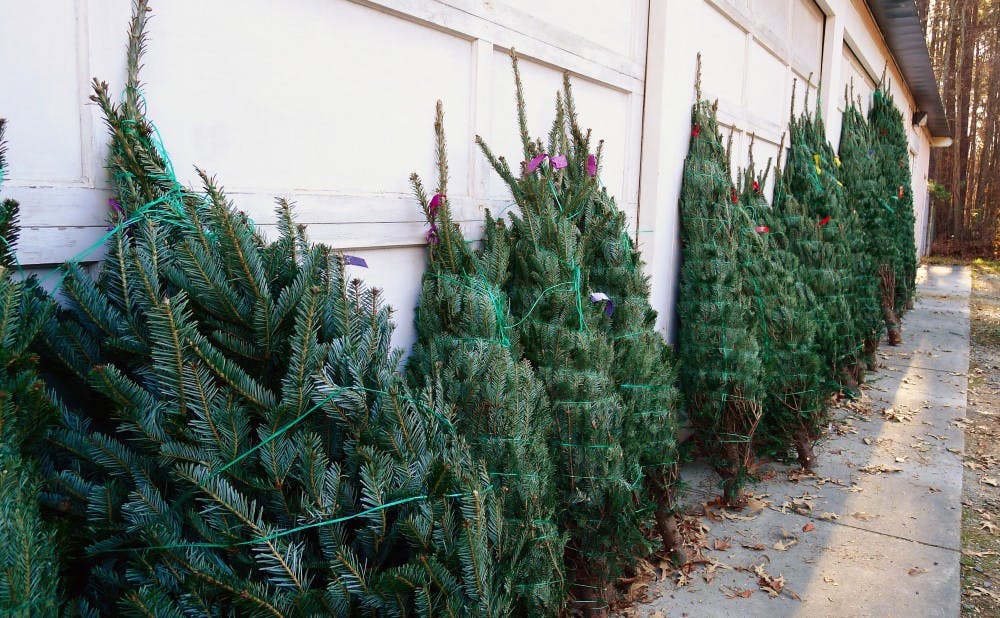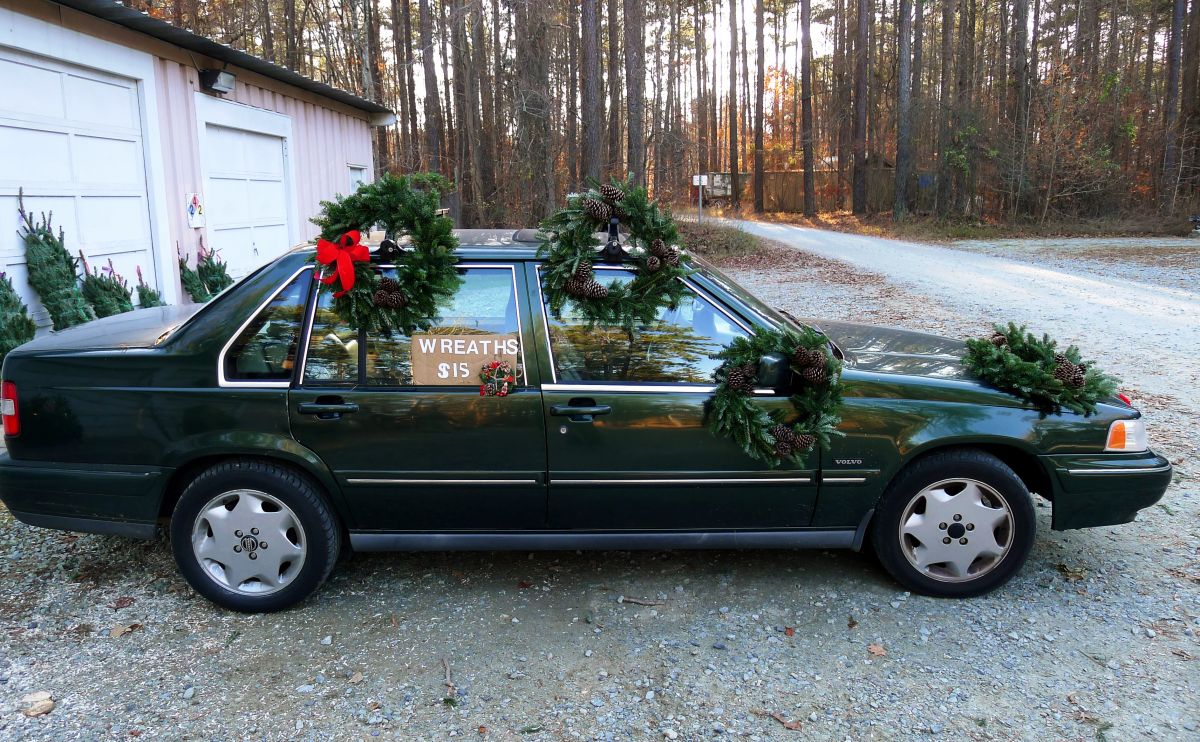Bundling up in sweaters and scarves, examining an impressive line-up of pine trees in a parking lot lit up by string lights and sipping hot chocolate while picking out the perfect Christmas tree is a holiday tradition for many families.
For some tree-loving Duke forestry students, the tradition is trimming off branches, spending hours lugging the long and bulky trees, strapping them into pickups and going home covered in sap and needles and smelling like wintery pine. For nearly 50 years, students at what is now the Nicholas School of the Environment have held a Christmas tree sale almost every holiday season.
“If you don’t like being all sappy and smelling like tree, it’s not for you, but we’re just all relishing in it,” said Jason Elliott, a third-year master of environmental management student involved in this year’s sale. “We also get to take out our chainsaws… and practice the things that we are learning.”
Duke Forest Resource Manager Judd Edeburn, Environment ’72, was part of the Christmas tree sale as a student. One year, he went with a group of students to the mountains in western North Carolina to chop down the trees themselves.
“I learned how they were grown, how long it takes to grow one of a certain size, how far apart to plant them [and] their care,” he said. “It was an educational process, as well.”
When the annual sale started in the 1960s, students would sell trees in a parking lot near the Biological Sciences building, Edeburn said. The sale went on a brief hiatus in the 1990s, when the Nicholas School moved from BioSci to the Levine Sciences Research Center, where there wasn’t a good place to set up shop. But about 10 years ago, the Duke chapter of the Society of American Foresters decided to pick the tradition back up again, started raising money for club programming.
They now purchase fraser firs from growers in the North Carolina mountains and usually sell more than 100 trees each year. The trees raise about $1,500 for their organization, said Jen Santoro, a third-year master of environmental management student and SAF member. They take online orders in November, and customers can pick up their trees at the Duke Forest maintenance shop on one of two weekend days in December. They also make wreaths using a homemade contraption that looks like a table with a mouth. The mouth-like machine comes up and out of the table and clamps down on greens.
Producing 2.8 million trees in 2009, North Carolina is the number-two grower of Christmas trees, following Oregon. Fraser firs, popular for their good shape and needle retention, only grow in the Appalachian Mountains.
“The climate here in the mountains is just about perfect for fraser firs, and they’re one of the best,” Edeburn said.
Elliott noted that his 8-foot fraser fir, ordered through the SAF sale, lasted from December to nearly March last season.
Pines grow in the eastern parts of North Carolina, but not the species used for Christmas trees. Duke students worked with local growers to plant more traditional Christmas trees in the Duke Forest about six years ago, but the project was abandoned after just two years.
“The amount of work it takes to produce a Christmas tree is substantial,” Edeburn said, noting that the trees have to be pruned, fertilized and cared for throughout the year, even during the summer when students aren’t around.
Santoro, who helped remove some of the abandoned Christmas trees, noted that it is hard to maintain interest in a Duke Forest Christmas tree farm because the group of forestry students is relatively small. Most students graduate after two or 2.5 years—not long enough to see their trees grow fully.
But as Nicholas School students, they do what they can to make sure their trees are as environmentally friendly as possible. This year, they purchased from a grower that uses integrated pest management, which is a way of keeping pests away using the lowest amount of pesticides possible. Santoro said it is the closest they can get to organic without charging exorbitant prices.
“It’s a nice concept that the environment’s being saved somewhere far away from us, and we get to be part of that market that’s supporting that system,” Elliott said.
Although it might seem contrary to popular knowledge, chopping down some trees is good for the environment, as long as foresters are harvesting sustainably, Elliott noted, adding that all trees will die eventually. Most forests, including Duke’s, make their money by selling timber. Without products like Christmas trees, they would be unsustainable, which would be worse for the environment in the long run.
The SAF tree sale is a bit smaller than it was in previous decades, but they still have a sense of being part of the Duke community, Edeburn said. There are faculty members and departments that purchase from the sale every year and often take time to talk with the students loading trees onto their cars.
“Because of the time of the year, everyone’s happy,” Santoro said.
Tips from foresters Jen Santoro and Jason Elliott, both third-year master of environmental management students, for picking out a tree and keeping it healthy:
- For the iconic Christmas tree, look for one with a cone shape. If a tree is wrapped up, you can tell that the tree will have good shape if it looks like a teardrop.
- If you want to put a star on the top, make sure the top of your tree isn’t split into two or three different branches.
- Make sure your tree has an “X” cut in the bottom (many sellers do this for you) in order to increase the surface area where the tree can absorb water.
- Keep the tree in a stand that has a big water reservoir in order to keep the needles from drying out and falling off.
Get The Chronicle straight to your inbox
Signup for our weekly newsletter. Cancel at any time.




